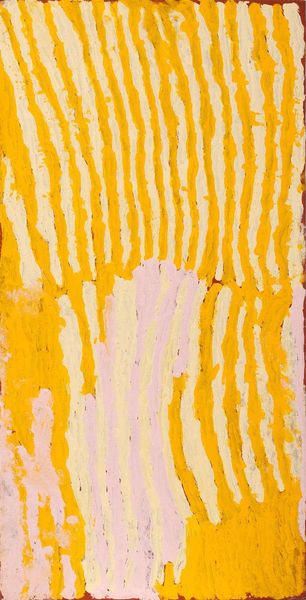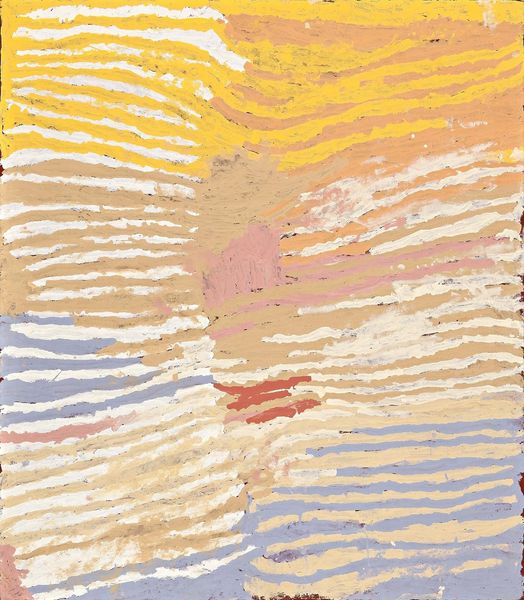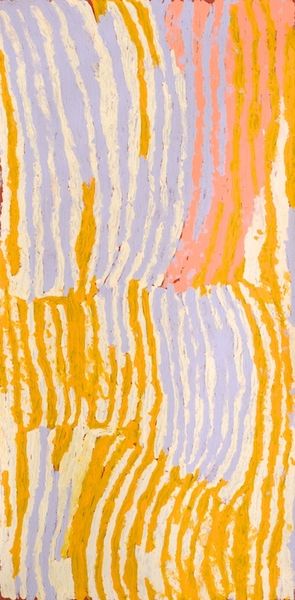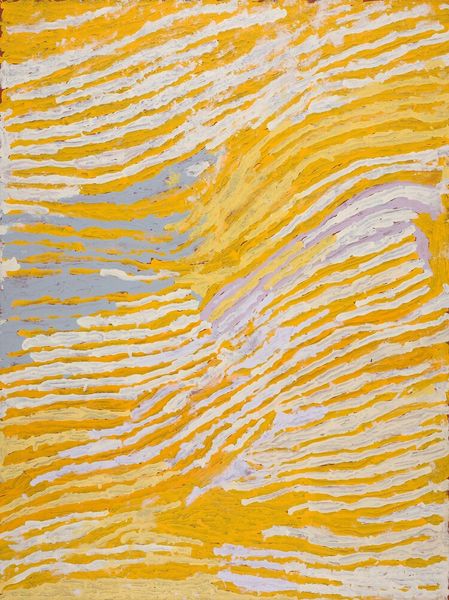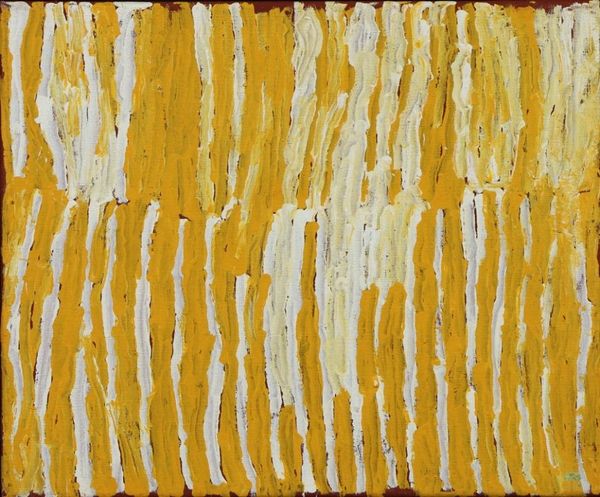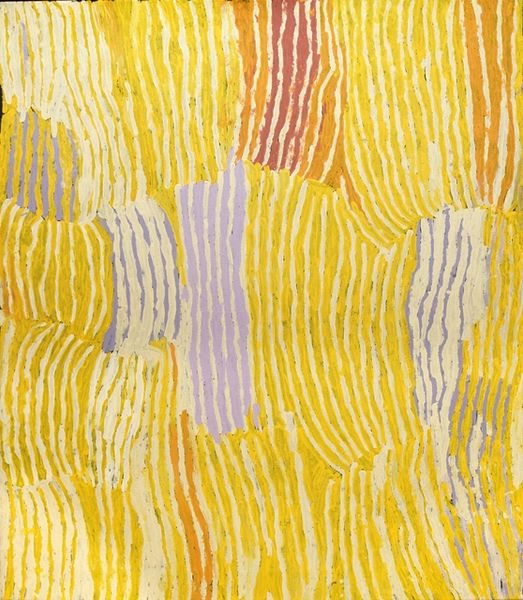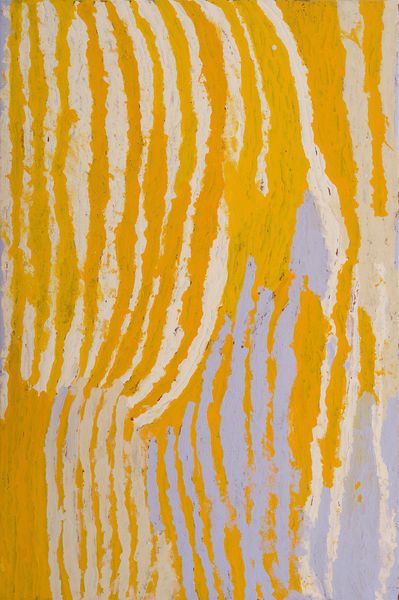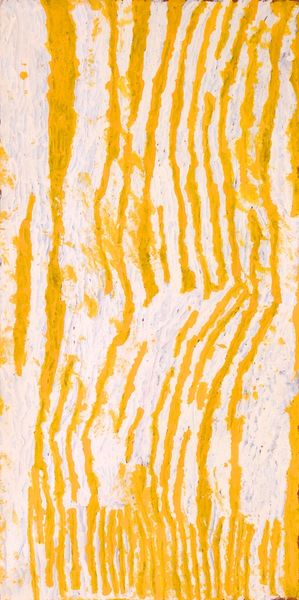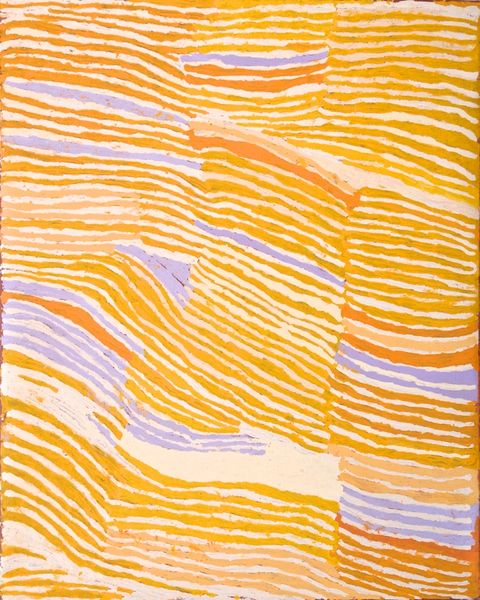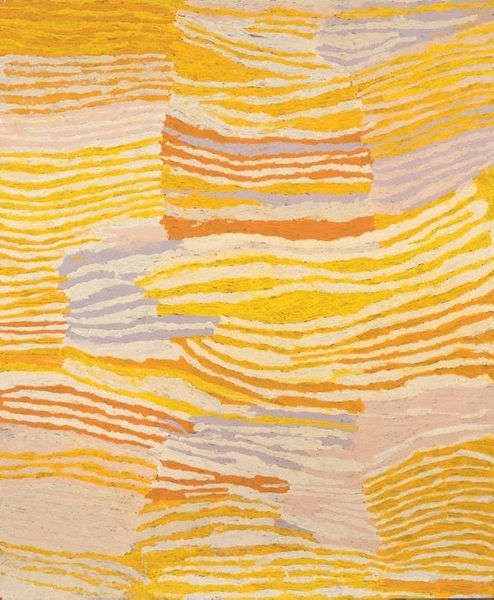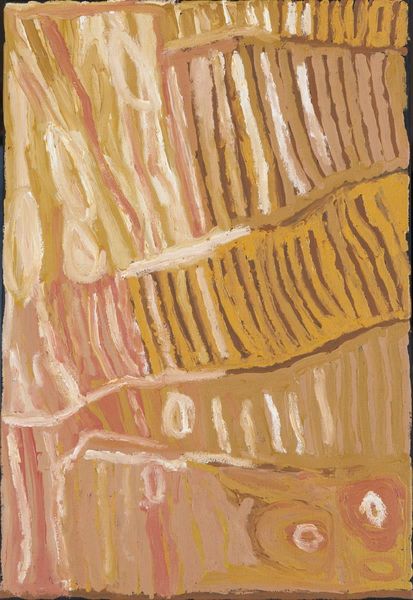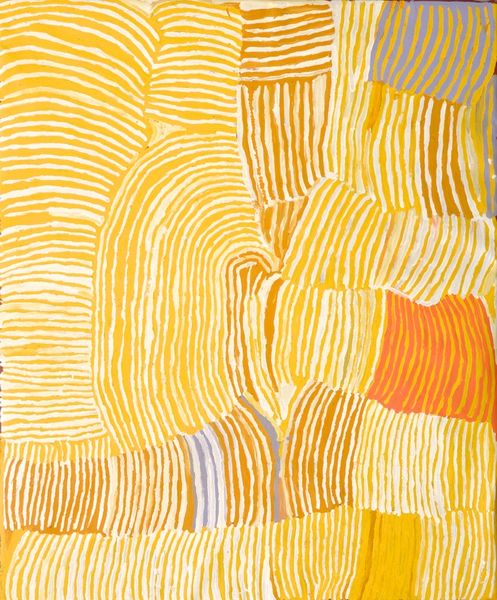
painting, acrylic-paint
#
painting
#
acrylic-paint
#
form
#
acrylic on canvas
#
abstraction
#
line
#
abstract art
Copyright: Makinti Napanangka,Fair Use
Makinti Napanangka painted "Lupulnga" with acrylic on canvas, using a vibrant palette and rhythmic lines to depict the Australian landscape. This work emerged from the Papunya Tula art movement in the 1970s, which marked a significant shift in how Aboriginal art was perceived and valued. Traditionally, Indigenous art was ethnographic, seen as anthropological artifacts rather than fine art. The Papunya Tula movement, supported by teachers and art facilitators, provided a platform for Aboriginal artists to share their stories and cultural knowledge through painting. Napanangka's work embodies this transition, reclaiming Indigenous representation within a fine art context. The painting's abstraction invites viewers to engage with the cultural narratives embedded within the landscape. To fully appreciate this artwork, we need to delve into the history of the Papunya Tula movement, and explore the cultural significance of the landscape in Aboriginal traditions. This kind of contextual research reveals the power of art to challenge institutional norms and celebrate cultural identity.
Comments
No comments
Be the first to comment and join the conversation on the ultimate creative platform.

